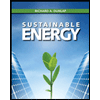
Engineering Fundamentals: An Introduction to Engineering
6th Edition
ISBN: 9780357112311
Author: Saeed Moaveni
Publisher: Cengage Learning US
expand_more
expand_more
format_list_bulleted
Concept explainers
Question
Chapter 13, Problem 18P
To determine
Compute the amount of coal could be saved in kg if the average efficiency of power plants increases by
Expert Solution & Answer
Want to see the full answer?
Check out a sample textbook solution
Students have asked these similar questions
5. Use the graph and data table below to determine:
strain(in/in)
0
Stress (psi)
30,000
25,000
20,00
15,000
stress (psi)
0
2,500
0.00025
5,000
0.0005
7,500
0.00075
9,600
0.00096
11,170
0.001117
13,500
0.00135
10,000
16,612
0.001875
15,430
0.0025
5,000
22,350
0.00312
26,800
0.0042
25,810
0.00472
Stress Strain Curve
☑
0.0005 0.001 0.0015 0.002 0.0025 0.003 0.0035
0.004
0.0045 0.005
Strain (in/in)
a) Proportional limits: (stress in units of psi, strain in units of in/in)
b) Modulus of elasticity (units: ksi)
c) Ultimate strength (units: psi)
d) Rupture strength (units: psi)
Q2. Find the support reactions at A and F for the given structure in Fig.(2).
80kN-m
2 kN
1 m
2 m
Im
1 m
2 m
Fig. (2)
A continuous foundation is shown in Figure 1. If the load eccentricity, e = 0.5 meter.
Determine the ultimate load Qult per unit length of the foundation. Use Mayerhof’s effective
area method. Given B = 2 meter, Df = 2.0 meter , ϕ = 40 , c’ = 0 kN/m3, γ = 16.5 kN/m3
.
Calculate also the Factor of Safety for the shallow foundation.
Chapter 13 Solutions
Engineering Fundamentals: An Introduction to Engineering
Ch. 13.2 - Prob. 1BYGCh. 13.2 - Prob. 2BYGCh. 13.2 - Prob. 3BYGCh. 13.2 - Prob. 4BYGCh. 13.2 - Prob. 5BYGCh. 13.2 - Prob. BYGVCh. 13.4 - Prob. 1BYGCh. 13.4 - Prob. 2BYGCh. 13.4 - Prob. 3BYGCh. 13.4 - Prob. 4BYG
Ch. 13.4 - Prob. BYGVCh. 13.5 - Prob. 1BYGCh. 13.5 - Prob. 2BYGCh. 13.5 - Prob. 3BYGCh. 13.5 - Prob. 4BYGCh. 13.5 - Prob. 5BYGCh. 13.5 - Prob. BYGVCh. 13 - Prob. 1PCh. 13 - Prob. 2PCh. 13 - An elevator has a rated capacity of 2200 lb. It...Ch. 13 - Prob. 4PCh. 13 - Prob. 5PCh. 13 - Prob. 6PCh. 13 - Prob. 7PCh. 13 - Prob. 8PCh. 13 - Prob. 9PCh. 13 - Prob. 10PCh. 13 - Prob. 12PCh. 13 - Prob. 14PCh. 13 - Prob. 15PCh. 13 - Prob. 16PCh. 13 - Prob. 17PCh. 13 - Prob. 18PCh. 13 - Prob. 19PCh. 13 - Prob. 20PCh. 13 - Prob. 22PCh. 13 - Prob. 23PCh. 13 - Prob. 24PCh. 13 - Prob. 25PCh. 13 - Prob. 26PCh. 13 - Prob. 28PCh. 13 - Prob. 29PCh. 13 - Prob. 30PCh. 13 - Prob. 31PCh. 13 - Prob. 32PCh. 13 - Prob. 33PCh. 13 - Prob. 34PCh. 13 - Prob. 35PCh. 13 - Prob. 37PCh. 13 - Prob. 38P
Knowledge Booster
Learn more about
Need a deep-dive on the concept behind this application? Look no further. Learn more about this topic, civil-engineering and related others by exploring similar questions and additional content below.Similar questions
- A simply supported beam is subjected to the end couples (bending is about the strong axis) and the axial load shown in the figure below. These moments and axial load are from service loads and consist of equal parts dead load and live load. Lateral support is provided only at the ends. Neglect the weight of the beam and investigate this member as a beam-column. Use Fy that P40 k and M = 68 ft-k. For W10 × 33: I = 171 in.4; 10 ft and C₁ = 1.0: Mn = 134 ft-kips and Mn/₁ = 89.3 ft-kips; = 50 ksi. Suppose for Lb for Lc - = 10 ft: Pn 330 kips and Pr/c = 220 kips. W10 X 33 P M M 10' Pu A) + Ферп 9 a. Use LRFD. Select the interaction formula: Mur 84, Mnz Muy + <1.0 Фь Мпу Pu Mur Muy B) + + ≤ 1.0 20c Pn Фь Мих nx ФоМпу -Select- ✓ Compute the interaction formula. (Express your answer to three significant figures.) -Select- 1.0 This member is -Select- b. Use ASD. Select the interaction formula: Ра 8 Max May A) + + <1.0 Pn/c Mnx/b Mny/b Pa Max May B) + + 1.0 2Pn/c Mnx/b Mny/b -Select- Compute the…arrow_forwardDetermine whether the given member satisfies the appropriate AISC interaction equation. Do not consider moment amplification. The loads are 50% dead load and 50% live load. Bending is about the x axis, and the steel is ASTM A992. Suppose that P = 280 k. For W12 x 106 with Fy = 50 ksi and Lc = 14 feet: Ферп 1130 kips, Pn/Sc = 755 kips, Mn = 597 ft-kips, Mn/₁ = 397 ft-kips. P 240 ft-k W12 X 106 14' K₁ = Ky = 1.0 240 ft-k a. Use LRFD. P Determine the factored axial compressive load and the factored bending moment. (Express your answers to three significant figures.) P₁ = Mu = kips ft-kips Select the interaction formula: P₁ A) + Мих Muy + ≤1.0 Ферп 9 Фь Мих of Mny Pu Мих Muy B) + 20c Pn Mnz + <1.0 Фь Мпу -Select- Compute the interaction formula. (Express your answer to three significant figures.) -Select- 1.0 This member -Select- b. Use ASD. the AISC Specification. Determine the total axial compressive load and the maximum bending moment. (Express your answers to three significant…arrow_forwardRefer to the following figure: K 6 m T 0.25 H 0.75 H 1 m A c,O,Y 3 m B 2 m 1 m C Figure Peck's (1969) apparent-pressure envelope for cuts in soft to medium clay Given: y = 17.5 kN/m³, c = 30 kN/m², 6 = 0, and center-to-center spacing of struts in the plan = 5 m. Determine the sheet-pile section modulus for the braced cut. Use all = 150 MN/m². (Enter your answer to three significant figures.) S = ×105 m³/marrow_forward
- Refer to the braced cut shown in the following figure: -3.5 m 1 m A Sand Y,',c' 2 m B 2 m C 1.5 m Given: γ · = 21 kN/m³, ′ = 40°, and c' = 0. The struts are located at 4 m center-to-center in the plan. Determine the strut loads at levels A, B, and C. (Enter your answers to three significant figures.) PA = kN PB = kN Pc kNarrow_forwardRefer to the following figures: 6 m 0.25 H 0.75 H 3 m 2 m 1 m A с.ф.у 1 m B Figure Peck's (1969) apparent-pressure envelope for cuts in soft to medium clay Given: y = 18.4 kN/m³, c = 30 kN/m², p = 0, and center-to-center spacing of struts in the plan = 5 m. Determine the strut loads at levels A, B, and C. (Enter your answers to three significant figures.) PA= kN PB = kN Pc= kNarrow_forwardRefer to the following figure: 6 m 3 m 2 m 1 m A c,φ,γ 1 m B Given: y = 17.9 kN/m³, c = 60 kN/m², 6 = 0, and center-to-center spacing of struts in the plan = 5 m. The length of the cut is 12.5 m. Determine the factor of safety against bottom heave for the braced cut. Use the equation CNC (1+0.25) FS = զ с x + H B' :) H (Enter your answer to three significant figures.) FS =arrow_forward
- Given Data Initial Road Design: • Design speed: 85 km/h • • Radius of both circular arcs: R = 845 m = 0.44 m/s³ = 250 m • Rate of gain of radial acceleration on all transitions: q Length of straight section between the curves: Lstr Redesigned Road: New design speed: 120 km/h • New radius: R' = 2500 marrow_forwardKindly answer correctly. Do not use AI.Please show the following:A diagram showing your understanding of each part of each question;Show your method of solving it; andCorrect solutions.arrow_forwardKindly show all the steps including a diagram.arrow_forward
- 4-7 Nitrogen (molecular weight 28) expands reversibly in perfectly thermally insulated cylinder from 3.5bar, 200°C to a volume of 0.09m. If the initial volume occupied was 0.03m³, calculate the work done during the expansion. Assume nitrogen to be perfect gas and take Cv = 0.741kJ/kg.K (9.31kJ) 4-8 1kg of air at 1.02bar, 20°C is compressed reversibly according to a law p.V¹³ = const., to a pressure of 5.5bar. Calculate the work done on the air and the heat flow to or from the cylinder walls during the compression. (133.5kJ/kg; -33.38kJ/kg)arrow_forwardable to help me with the question below with references (APA) for revision purpose Structural InvestigationThe Building Maintenance and Strata Management Act 2004 interprets “Structural elements,for a building means an internal or external load-bearing component of the building or part ofthe building that is essential to the stability of the building but exclude any door or window.”Loading-bearing components such as wall, column or beam, etc, are subjected to externalforces. (a) Interpret the diagnosis of a structural defect and discuss FOUR (4) external forces ona structure element that may cause structural cracks.(b) Discuss the effects of alkali-silica reaction on concrete structures and formulateFOUR (4) preventive measures.(c) Discuss the differences between chloride attack and sulphate attack on concretestructures(d) Formulate preventive measures to prevent or reduce chloride and sulphate attack onconcrete structures Hard FinishesNatural timber flooring such as timber strips…arrow_forwardDetermine the following "Side Shot" elevations given the following information:arrow_forward
arrow_back_ios
SEE MORE QUESTIONS
arrow_forward_ios
Recommended textbooks for you
 Engineering Fundamentals: An Introduction to Engi...Civil EngineeringISBN:9781305084766Author:Saeed MoaveniPublisher:Cengage Learning
Engineering Fundamentals: An Introduction to Engi...Civil EngineeringISBN:9781305084766Author:Saeed MoaveniPublisher:Cengage Learning
 Sustainable EnergyCivil EngineeringISBN:9781133108689Author:Richard A. DunlapPublisher:Cengage Learning
Sustainable EnergyCivil EngineeringISBN:9781133108689Author:Richard A. DunlapPublisher:Cengage Learning

Engineering Fundamentals: An Introduction to Engi...
Civil Engineering
ISBN:9781305084766
Author:Saeed Moaveni
Publisher:Cengage Learning


Sustainable Energy
Civil Engineering
ISBN:9781133108689
Author:Richard A. Dunlap
Publisher:Cengage Learning